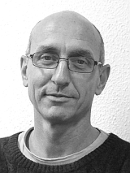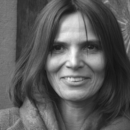Voices on CPM
 Many projects in Tanzania have been implemented without CPM consideration. Consequently, when conflicts arose, there was no mechanism to address these conflicts. With the introduction of CPM in the Trans-SEC project, several differences in opinion that could have escalated into conflicts were resolved. Thus, all institutions involved in the project have clearly benefited from the CPM-System. I strongly recommend that any new research project must have a CPM component as a part of it and that it should be well-funded from the outset. (Prof. H. Mahoo, SUA, Tanzania)
Many projects in Tanzania have been implemented without CPM consideration. Consequently, when conflicts arose, there was no mechanism to address these conflicts. With the introduction of CPM in the Trans-SEC project, several differences in opinion that could have escalated into conflicts were resolved. Thus, all institutions involved in the project have clearly benefited from the CPM-System. I strongly recommend that any new research project must have a CPM component as a part of it and that it should be well-funded from the outset. (Prof. H. Mahoo, SUA, Tanzania)
 CPM knowledge and understanding among team members has helped greatly to narrow the gapbetween consortium members from the North and the South, thus making the whole collaborative research team feel like one entity. In particular, it built up the confidence of African team members with respect to decision-making, thus enabling good cooperation. In addition, our own institution has profited immensely, as we could directly transfer CPM knowledge and skills to our working environment. We have also set up a conflict management training program for the members of TFC.
(Florian, Haule, TFC, Tanzania)
CPM knowledge and understanding among team members has helped greatly to narrow the gapbetween consortium members from the North and the South, thus making the whole collaborative research team feel like one entity. In particular, it built up the confidence of African team members with respect to decision-making, thus enabling good cooperation. In addition, our own institution has profited immensely, as we could directly transfer CPM knowledge and skills to our working environment. We have also set up a conflict management training program for the members of TFC.
(Florian, Haule, TFC, Tanzania)
 As the scientific project coordinator, I found CPM helped a lot in facilitating procedures and communication among partner institutions and colleagues in situations where communication would have otherwise completely stopped or been reduced. I experienced this across all institutions and hierarchical levels, as well as across multiple cultures. CPM made a difference in how tense and pressing issues were dealt with on a personal level and how they were communicated between two or more persons. The entire research project benefitted from the supporting procedures, protocols, responsibilities, and activities. CPM experiences will have a long-term effect, benefitting all the individuals and partner institutions involved. (Frieder Graef, ZALF, Germany)
As the scientific project coordinator, I found CPM helped a lot in facilitating procedures and communication among partner institutions and colleagues in situations where communication would have otherwise completely stopped or been reduced. I experienced this across all institutions and hierarchical levels, as well as across multiple cultures. CPM made a difference in how tense and pressing issues were dealt with on a personal level and how they were communicated between two or more persons. The entire research project benefitted from the supporting procedures, protocols, responsibilities, and activities. CPM experiences will have a long-term effect, benefitting all the individuals and partner institutions involved. (Frieder Graef, ZALF, Germany)
 In collaborative research projects, relations between the different parties involved matter for project success. However, in most cases, this is not explicitly considered and, therefore, not openly addressed within the projects’ lifetime. Conflict Prevention and Management (CPM) fills this gap. CPM supports building relationships between different project members, such as researchers, farmers, extension staff, and policy makers. Each individual has different roles and interests in the collaboration and face different constraints with regard to their participation. Trans-SEC is a large-scale research project with team members from an exceptionally wide variety of backgrounds and societal groups – all with the intention to create knowledge that will foster development in different domains, such as farming, science, and policy formulation. Well-functioning relationships between them are essential for information sharing and knowledge creation. Hence, relationships play an important role for creating a productive working atmosphere and achieving the project goals. It is DITSL’s philosophy that projects must be inclusive of that wide variety of participants in order to effectively co-create knowledge that translates into development. Given its sound integration into the project, continuous CPM is a suitable instrument that fosters team formation and maturation. DITSL strongly recommends its incorporation into project design. (Prof. Dr. Brigitte Kaufmann, DITSL, Germany)
In collaborative research projects, relations between the different parties involved matter for project success. However, in most cases, this is not explicitly considered and, therefore, not openly addressed within the projects’ lifetime. Conflict Prevention and Management (CPM) fills this gap. CPM supports building relationships between different project members, such as researchers, farmers, extension staff, and policy makers. Each individual has different roles and interests in the collaboration and face different constraints with regard to their participation. Trans-SEC is a large-scale research project with team members from an exceptionally wide variety of backgrounds and societal groups – all with the intention to create knowledge that will foster development in different domains, such as farming, science, and policy formulation. Well-functioning relationships between them are essential for information sharing and knowledge creation. Hence, relationships play an important role for creating a productive working atmosphere and achieving the project goals. It is DITSL’s philosophy that projects must be inclusive of that wide variety of participants in order to effectively co-create knowledge that translates into development. Given its sound integration into the project, continuous CPM is a suitable instrument that fosters team formation and maturation. DITSL strongly recommends its incorporation into project design. (Prof. Dr. Brigitte Kaufmann, DITSL, Germany)
 From the coordination perspective, CPM helps reduce my overall workload with respect to the project, in terms of managing additional conflict related issues. It feels good to have a working mechanism and experts who dedicate their potential to increasing the quality of collaboration and to establishing a good atmosphere. Moreover, potential, foreseeable, tensions are resolved in advance, helping build and sustain a fruitful and feasible project structure. As the principal coordinator, and responsible by contract to the ministries, I have to report to the donors. This particular role generates a need to a permanently justify and market the research project. This pressure can also cause internal stress. From my perspective – through CPM activities and interventions – the pressure was substantially mitigated. I felt supported continuously and halfway through I knew that the entire consortium was motivated. The positive feedback gave me the confidence that Trans-SEC will be successful. I will never work without CPM in the future. (Dr. Stefan Sieber, ZALF, Germany).
From the coordination perspective, CPM helps reduce my overall workload with respect to the project, in terms of managing additional conflict related issues. It feels good to have a working mechanism and experts who dedicate their potential to increasing the quality of collaboration and to establishing a good atmosphere. Moreover, potential, foreseeable, tensions are resolved in advance, helping build and sustain a fruitful and feasible project structure. As the principal coordinator, and responsible by contract to the ministries, I have to report to the donors. This particular role generates a need to a permanently justify and market the research project. This pressure can also cause internal stress. From my perspective – through CPM activities and interventions – the pressure was substantially mitigated. I felt supported continuously and halfway through I knew that the entire consortium was motivated. The positive feedback gave me the confidence that Trans-SEC will be successful. I will never work without CPM in the future. (Dr. Stefan Sieber, ZALF, Germany).
Based on the fact that Trans-SEC project is a multi-cultural project, involving people of different professions, expertise, fields of study, education levels, and ethnicities, its implementation would have been difficult without CPM. Each institute and research team has its own interests, needs, and wants, which sometimes may conflict with each other, thus causing issues between parties. But with CPM, each emerging issue was settled in an amicable way without causing too much conflict. From this CPM, my organization has learned a lot, especially for resolving employees-related conflicts. Typically, in any work place where people have different origins and cultures, conflicts, however small, will arise between parties. For my office, CPM taught us how to resolve these small issues calmly. The effects of CPM are not limited to the Trans-SEC project, but rather expand to the communities where we live. As a leader in the community group where I live, CPM has helped me resolve many issues that emerge in the course of fulfilling my responsibilities as a leader. Thus, the lessons of CPM support not just our professional life, but also our personal life; and therefore I strongly recommend it to be used in the design of future projects like Trans-SEC. (Laetitia William, ACT, Tanzania)



